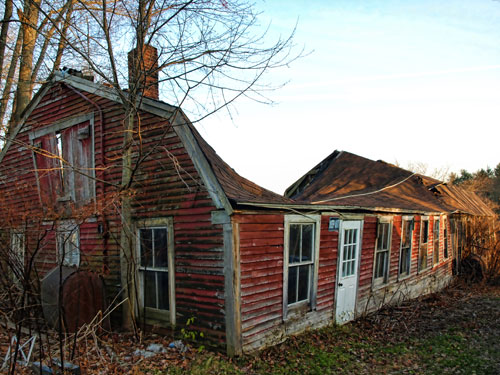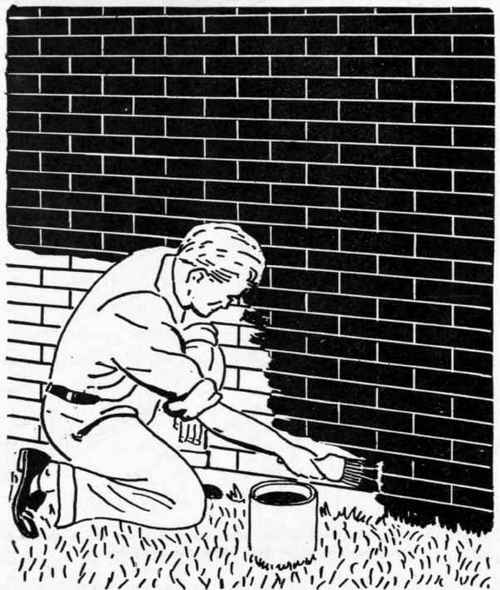Im sure that there is not a single person left in NZ who has not heard all about our leaky houses. With a bit of luck, even the builders and designers responsible should have figured out by now what not to do, so sparing us every having to rebuild our suburbs again in the future. It’s a complex problem, but at the end of the day, it is really quite simple : a toxic mix of untreated timber, externally insulated plastered walls, poor junction detailing and bad construction practices. Solve all of those, put in a drainage cavity, and correct flashings, and we really should be able to have dry houses. It’s not that hard.

So why then are we having a spate of leaky schools? This is a question that I really don’t know the answer to. The houses that are leaking are nearly all designed by non-architects, purely for the reason that non-architects design nearly all our houses. The big flash architecturally designed houses are, on the whole, pretty well designed and pretty well built, and so should be pretty well leak and rot resistant. Apartment buildings, on the other hand, are complex beasts and are presumably nearly always designed by architects, as I think that anyone trying to design and build a Multi-unit development without an architect would have to be mad. There obviously have been some shocking leakers amongst those, especially in Auckland, over the last 10 years or so, but recent apartment buildings like the Stratum developments designed by Architecture + which are brick clad should be, fingers crossed, as snug as a bug in a rug.

But then: why are we still having a problem with schools? In a recent report, there are so far 273 schools identified as having a leaky problem, and it is estimated to cost at least $1.5 billion to fix. I just don’t understand what is going on in the education arena. There used to be a division of the Ministry for Education that designed all the schools – presumably this was abolished years ago, and replaced with freelancing consultant architects. All that expertise seems to have been thrown out the door as well, or so it seems.

As a little Fish, our schools were of course always kind of wet, but we didn’t mind. There were little piles of sawdust that miraculously appeared in corners when some child had had an accident, and puked, peed, or bled over the floor. Bodily fluids were the only liquid problem we really had. Big wide windows allowed light to flood in, in winter we froze our tits off if the big old basement boiler failed, but the walls were built ruggedly to withstand boyhood ball games, bullrush, bashings, and general bouncing around. Externally it was always weatherboard, unless you were in the nasty old “prefabs” which seemed to have been made of a cross between cardboard and fibre cement. But from memory, nothing ever leaked.

So, what is going on? Can anybody spill the beans? Are external walls, which need to be strong enough to withstand the bashings of a thousand young boisterous things, actually being made of EIFS? I find it hard to believe that anyone would be so stupid as to spec that for a school. Polystyrene being nice and squishy, and a school building wanting to be hard and tough, seem to be at opposite ends of the spectrum. So why are our walls leaking in schools? And what is more – why are the roofs leaking? There are no complicated balcony junctions on a school roof, as schools are really just one or sometimes two stories high – so what is hard about getting a watertight roof up there? It should all be simple and we really shouldn’t be having this problem?
So does anyone want to tell us, anonymously, what is going on?





I have no idea so can only speculate.
When we were studying masonry in my structures classes at uni our introduced masonry block by saying “there are two predominant buildings of this construction method – prisons and schools – and they’re a lot alike! Only the prisons are better maintained..” ba dum dum!
My guess is lack of proper maintenance. At least this is the case in many places overseas. Education budgets have been slashed and slashed, and the primary focus tends to be on maintaining staff, so building maintenance programs are slashed. I once worked on a master plan for a college where deferred maintenance was higher than costs of a new building.
So that’s my guess, but am curious to hear if someone has the truth…
sorry.. that was meant to say “at uni our LECTURER introduced”…
Few architects involved in leaky houses. . . are you sure? There’s one just round our corner designed by a Mr Walker that’s just been pulled down.
Owen – I have no access to accurate numbers, as the whole leaky thing is under wraps, so to speak, and so I can only operate from a position of logic. If, as it is often surmised, architects only design 5% of the houses in New Zealand, then by correlation non-architects design 95% of the houses. The houses that architects design are normally for richer clients, and therefore are more expensive houses – and are often more complex too. The more complex details and junctions may make them more likely to leak, but I don’t really think so. The use of cheap EIFS poly and plaster is a phenomenon mainly restricted to volume builders – nobody in their right mind would still be using it today, and yet, it still is sold and used in el cheapo house companies up and down the country. But, there was a stage in the history of our country when even architects used EIFS too.
Roger Walker’s Greek style town hous on Mt Vic, that were such an enjoyable sight for so many years, are indeed leaky old dungas, and the joke that they so merrily espoused is no longer quite so funny. Roger sometimes reads this blog, I reckon, but I don’t think he’ll be likely to reply and tell us why those buildings deserve to die. It’s all sub judice. Was it a design fault? A lack of detail? A wrongly specked product? A bad builder, a lax Council inspection, a lack of flashings, or just another Greek tragedy? I’d love to know….
>There used to be a division of the Ministry for Education that designed all the schools – presumably this was abolished years ago, and replaced with freelancing consultant architects. All that expertise seems to have been thrown out the door as well, or so it seems.
So you’re saying that architects employed by the government are experienced and competent, but self-employed architects and architects employed by architecture firms are inexperienced and incompetent? If that is the case, then we really need to establish a government architecture agency and give it a legislated monopoly on all building design in NZ. Perhaps make it illegal to design a building unless you work for the government?
>Education budgets have been slashed and slashed
When? In my experience, the education budget increases every year without fail. The most the government can do is try and slow the rate of increase. A quick check suggests that education spending is due to increase by $400million this year, even in the middle of the GFC, the collapse of many European economies, and the need to finance the rebuild of Christchurch.
Rog has already broken the seal here. It was published as a letter to the editor in the Dompost as well…
I mean here: http://www.rogerwalker.co.nz/2012/05/breaking-the-silence-on-weathertightness/
“The houses that are leaking are nearly all designed by non-architects” – not true. Houses have always leaked. Look inside the walls of any old villa on a wet day. Lots of architect designed houses leak – I knew someone that had an early Ath house that… Anyway as they used to be made out of native timbers with no insulation allowing them to dry out it didn’t matter. As noted the use of untreated timber in contact with FC sheet (Hardibacker etc.) has 90 something % failure expected as the damp FC sheet rots the building paper then the well insulated framing. In the early days of leaky houses the architects were very keen to dissociate themselves from the problem telling the few (at that time) that were being sued that is was their fault/problem and to grin and bear it. The insurers were also keen to settle and so a very lucrative industry was born. Nowadays of course just about all architects have or are being sued, including big firms & school designers so architects have decided it’s actually more a systematic failure. However once you have a litigation/reclad industry that needs to be fed there’s no end to the buildings that ‘leak’. If you do some research you’ll probably find lots of ‘leaky’ schools are being reclad at 4x actual cost because the MOE is a sucker and relies on project managers (architects don’t really control design of schools). Just because a building is identified as ‘leaky’ doesn’t mean it leaks. Just ‘cos someone is sued for designing a leaky building doesn’t mean they have or the building leaks. Yes there’s some horror story leakers rotting out there, but there’s also a massive amount of rorting going on.
@davidp – if you’re going to be a jackass and use my quote and attack it, you could at least acknowledge the full context of it where I was talking about OVERSEAS. it’s in the sentence right before it, it shouldn’t be that hard to miss.
Gosh. I leave the room for a minute, and you’re all at each others throats like a pack of feral rabbits. Please play nicely in the sandpit…. Ok – one thing at a time. Davidp – you’re sort of paraphrasing me, but yes, I do believe that when there was a Ministry of Education and a Ministry of Works, that there was a strong understanding of how to design a building and how to build it so that it didn’t leak. It may have all been a bit boring and a bit generic, but from what I understand, they did a good job. Thats not to say that private sector architects are inexperienced and incompetent, not at all, but they certainly are trying, in some areas, to do some innovative stuff. I only heard this yesterday, and I haven’t been to school for a while, but apparently NZ went through a phase of having open plan classroom teaching in the 1990s – did you know that? Primary schools with one big classroom and four separate classes going on at the same time? That sounds like a very silly idea to me, as clearly noise and distraction are going to be issues, but apparently the education profession wanted to experiment, and got the architects to design weird things like that. Experimentation, not sticking to the script, not toeing the party line, these are things that we keep thinking are part of the NZ psyche.
And yes, AB, I understand about the whole leaking thing that in NZ our buildings have always leaked, But I do find it hard to swallow, so to speak, that there are buildings that have a reputation for being a leaker, but secretly are not? Very hard to believe that the architects would let themselvesbe trampled over in such a fashion. We are going to need proof, I reckon!
>if you’re going to be a jackass and use my quote and attack it, you could at least acknowledge the full context of it where I was talking about OVERSEAS
Then I’m really confused. You think that lack of maintenance might be the issue. And it sounds like a reasonable possibility to consider. Then you note that this is the case overseas where budgets have been slashed. But they haven’t been slashed in NZ. So have we not been maintaining our school buildings for some other reason?
And where has education spending been “slashed” overseas? I can’t imagine any western government getting away with that for a variety of reasons, including the fact it would be political suicide.
>I do believe that when there was a Ministry of Education and a Ministry of Works, that there was a strong understanding of how to design a building and how to build it so that it didn’t leak.
Then that is a serious issue that needs addressing. Why does the architecture profession need to be employed as public servants in order to master the basics of designing sound buildings? Can’t architecture schools teach this? Or colleagues, if young architects are employed in the private sector? I’d be really worried if something similar afflicted the IT industry I work in and programmers working for Datacom, Orion, and Fronde were incompetent while those working for the Department of Labour were the stars.
while not wanting to stop a reply from minimus, perhaps I can stick my nose in here to comment on the core question behind your query: “Why does the architecture profession need to be employed as public servants in order to master the basics of designing sound buildings?”
I don’t believe that it does, but rather that there was a historical precedent that where that was the case. MOW / MOE architects did not probably / formally stick to job quotas in terms of billable hours, but modern, private sector architects do need to do so. I know of cases where architects working for the MOW spent many, many times more hours on a project than a closely observed budget would have afforded them if it were a private job, and then they had the luxury of an on-site Clerk of Works, and a contractor with a healthy margin, as well as inspections from heavily-experienced Council workers who knew what they were looking for.
The situation we have now is that at the MOE, projects are run completely by Project Managers, the architects are chosen on the basis of fee bids, not quality or capability – and thus their fees on the jobs are cut to the bone. Coupled with the removal from the scene of the profession of the Clerk of Works, who used to be tasked with making sure that work was performed to an impeccable standard in the old days, and also coupled with Contractors who have little staff on their own books, but who sub-contract out everything to others, it is in many ways perhaps more amazing that there are not more cock-ups on sites, and that any buildings come through unscathed at all.
A school in Waikato that has been reclad at a cost of $3M. Never seen it but I’ve read the following…
2010 “…the first building has had the [supposedly leaky cladding] ripped off it. Not a spot of decay to be seen. Perfectly sound.”
2011 “…the MoE that we had one [reclad consultant] write the report and another [reclad consultant with same name] peer review the report – recommend a massive amount of work based on spurious testing and reporting, attack the reputation of a commonly used cladding product, ignore all existing product and workmanship warranties in place – then go on to get the contract to document, tender and project manage the “remedial” work they concluded needed doing. The MoE reply of “we have every confidence in our expert advisors…”
June 2012 “…BRANZ have appraised [the cladding] for both direct fix and cavity construction, concluding that it meets the durability and external moisture requirements of the building code. Recent testing of [the cladding] by [the reclad consultant] had concluded that all samples had failed to meet the durability requirements of the code.”
Why would one have confidence that MOE’s advisers are recommending the most sensible course of action when they have a very profitable conflict of interest? Another reclad consultant’s website says “…joined [reclad consultant] in 2012 as General Manager. His previous role was as the National Programme Manager – Building Improvement for the Ministry of Education.”???
As a rule of thumb building work costing $1 costs around $4 if it’s associated with leakyness so one should be careful about why one does reclad work – there’s a 75% saving if you are recladding for some other reason.
Wow – sounds like you are absolutely right. That sounds like a Rort alright. I wonder why this is not hitting the mainstream media?
Can you name your sources? I think this should be investigated further. I hate corrupt officials – need to rip them out of the system and deny them access to power. Only way to do that is to expose them.
Looks like it was in the paper briefly http://www.stuff.co.nz/waikato-times/news/5646362/School-reclad-a-waste-of-2-5m-architect
There are similar stories – the apartment body corp who got a report saying that had a leaker and a lawyer recommending litigation at great cost. They got an independent report that came to another conclusion – yes it doesn’t comply with todays rules but no, it don’t need recladding as it’s concrete.
Your comments above above on PM’s running MOE projects and awarding tenders based on whose willing to do the cheapest job is spot on.
“And where has education spending been “slashed†overseas? I can’t imagine any western government getting away with that for a variety of reasons, including the fact it would be political suicide.”
REALLY? WHAT CLOSET DO YOU LIVE IN?!
it’s sounds like a fascinating place.
google “education budget cuts” every state in the US is doing it.
How ignorant can you be?..
As for the NZ – building maintenance comes out of operational funds. Operational funds have stayed flat. Operational funds also pay for teachers, utilities, petrol for buses, etc.
Back to Mt Victoria! When I heard about those houses being Roger Walker ones I couldn’t believe it; they looked so. . . er. . . tasteless? So you’re saying that it was just all postmodernist fun, with the Greek pillars disappearing at the same time as their economy?
Roger has talked publicly of the origin of those buildings, and his logic was impeccable. The Mt Vic guidelines said that new buildings must conform to the local character. His reasoning was, as the Mt Vic area formerly had a large community of Greeks, then the new townhouses he was proposing had references back to the ancient Greek temples, and how much more contextual could you get than that!
Plus – it was the eighties, PoMo was in, and we all did shit like that then. But none quite so well as Roger.
Davidp – I think that cutting education spending is quite common overseas – and while I know nothing about it in the US, or Asia, it is rife in England, probably quite common through Europe at present, and in Africa, of course, there is virtually no spending to start with. But cutting spending on issues that affect only teens and pre-teens is a safe electoral mood – they don’t get a vote till they are 18, so the politicians know they are a safe target to attack with relative impunity.